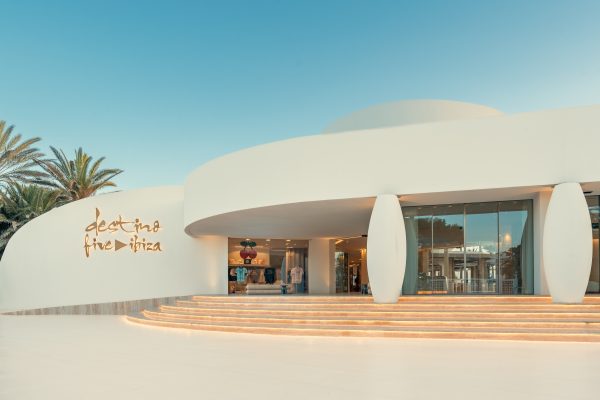
Conor Doyle, Ed Warner, Omar Gordon, Tomislav English & Vinicius Salles, Punchdrunk, The Drowned Man A Hollywood Fable, Photography Birgit & Ralf
At the height of the Hollywood golden age, Temple Studios, a moving-picture powerhouse, basked in the glow of fame and success. However, as time went on, the light of the golden age grew dim, and things that had once been gilded began to rust. Temple Studios was no exception. It fell, like most other Titans of the time, from a height too high, a drop too steep, to a fate all too inevitable. Yet, just before the crash could be heard, Temple Studio locked its doors, keeping all of its secrets hidden from the world.
Now, the doors have opened. Welcome to Punchdrunk’s newest and most ambitious project yet, The Drowned Man: A Hollywood Fable.
Punchdrunk, a London-based theatre company, specialises in self-named immersive theatre. Their projects draw an international audience and involve creating massive sets within available locations worldwide. In their performances, audiences are encouraged to explore both characters and scenes by choosing their own path as they walk throughout the set. The experience, in this way, is different for everyone, every time. This year, Punchdrunk has reopened 31 London Street for their biggest production to date. The Drowned Man: A Hollywood Fable is inspired by Büchner’s fractured masterpiece Woyzeck and set in a seedy Hollywood underworld amidst the remains of Temple Studios.
In the original Woyzeck, Woyzeck, the protagonist, is manipulated by different forces, so much so that he struggles with objectification, loss of purpose, and the loss his humanity. In the end of the play, Woyzeck murders his wife after discovering that she is having an affair. Büchner died before he could complete the novel, but many interpretations close the story with Woyzeck drowning in a river while trying to clean his wife’s blood from his hands.

Fernanda Prata, Jesse Kovarsky, Punchdrunk, The Drowned Man A Hollywood Fable, Photography Birgit & Ralf
Maxine Doyle, co-director and choreographer of Punchdrunk’s many immersive theatre projects, provided a bit of insight regarding the development of this particular premise: “All of our shows are draw from literature, and this story really captured the idea of power play. It gave the sense of people living on the edge of something. The story captures very human emotion. The characters live within the limitations of that world. In our case, we have a disadvantaged character living on the outside of Hollywood glamour.”
“Here,” claims National Theatre UK, describing the nature of The Drowned Man’s world, “movie stars mingle with hungry young upstarts, while beyond the gates lies a forgotten hinterland where the many rejected by the studio system scratch out a living. It has always been our site that decides what comes into play. This particular site lent itself to the aesthetic; we could really explore the idea of illusion,” Doyle said, commenting on the location of the large building on 31 London Street.

Kate Jackson & Oliver Hornsby-Sayer, Punchdrunk, The Drowned Man A Hollywood Fable, Photography Birgit & Ralf
When asked about the tagline “A Hollywood Fable,” Doyle explained that the structure of this “fable” doesn’t prescribe a lesson to the audience; it is the responsibility of the audience to gather lessons of their own: “The audience follows their own story and chooses their own journey. It’s a type of politics, the process of decision-making. They learn about themselves and their obsessions. We are not imposing a message on them. “
It is true that the audience is forced into self-dependency and isolation. Though people often arrive in groups, audience members are advised to “go it alone.” They are masked for the entirety of the show, a tactic that serves to maintain the mood and enforce individual experience through isolation. There is one area, a bar, where they are allowed to remove their masks and have a drink.
“This is the kind of work that really does attack an audience’s senses. We create the experience that we imagine will affect the audience in a profound way,” Doyle said. In addition to the mammoth that was the location, Punchdrunk also challenged themselves with the task of creating a show that followed more than one central narrative. In other words, where other shows had a clear lead, The Drowned Man has multiple.
“We invest in multiple storytelling, “Doyle explained, “We want to push ourselves in all aspects; scale, design, style, texture, colour, music…we don’t want to replicate what we’ve done before.” However, this is much easier said than done. Time constraints arose while booking the site, which narrowed the window for preparations: “We had a 12-week build, when it should have been 24,” Doyle laughed, “And a 9-week rehearsal that should have been 16.”
In order to bring this project to fruition, the group had to rely heavily on each other: “You’ll see about 35-40 different faces in the cast. We have to trust that all people involved are great creators in their own right. Everyone is creating at the same time. Performers become choreographers and directors, and at times, create their own content.”
The result has been tremendous. The Drowned Man, captures the viewer in a multi-layered narrative, fragmented only by individual and personal curiosity. It is truly a testament, not only to pushing the boundaries of traditional theatre, but to the cooperation and equality of all art forms within a single work. “We hope it is layered enough,” Doyle stated, “To draw in multiple types of people and uncover different types of truths. We want this experience to create multiple levels of inspiration. We want you to be inspired by the things you find you can do, and the things you can’t. “
The Hanged Man: A Hollywood Fable plays at Temple Studios, 31 London Street, W2, London. For tickets or more info, visit the show’s website.
Words / Amanda Hitchcock
Click the below links to view the newest Schön! Magazine
Schön! in glossy print
Download Schön! the eBook
Schön! on the Apple Newsstand
Schön! on Google Play
Schön! on other Tablet & Mobile device
Read Schön! online
Subscribe to Schön! for a year
Collect Schön! limited editions

























































































